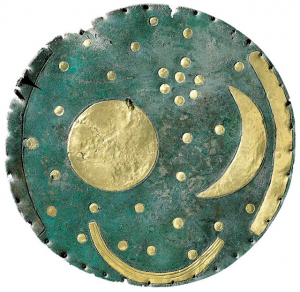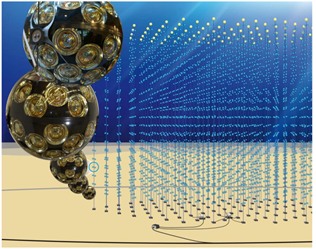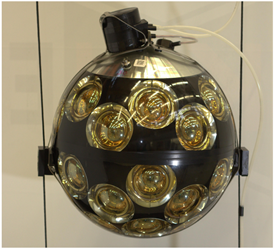KM3NeT
Kilometer Cube Neutrino Telescope
Since the dawn of time, man has been observing the sky, for fear, pleasure, to orient himself or to understand his environment. Until very recently, this observation of the Universe was essentially done thanks to photons over a very wide range of frequencies. These photons are neutral particles and are therefore not deviated by the magnetic fields that prevail in and between galaxies to the far reaches of the Universe. This advantage allows them to probe point objects in the Cosmos. Thus, many photographs and/or maps of the sky have been obtained in wavelength ranges from radio waves to gamma rays, passing through the optical domain or X-rays.
In recent years, two new and very promising messengers allow us to better understand the violent phenomena that govern the dynamics of the Cosmos and the early Universe. Gravitational waves, detected for the first time in September 2015, are one of these messengers, the second is the neutrino whose existence was postulated in 1930 and which was discovered experimentally in 1956. This particle, neutral and of very low mass compared to other particles, shares with the photon the property of not being deflected by intergalactic magnetic fields. The advantage of the neutrino over the photon is that it does not interact electromagnetically with matter, but only by weak interaction. This allows the neutrino to pass through gigantic quantities of matter (even dense matter) and to travel immense intergalactic distances without being disturbed. However, this advantage also turns out to be a disadvantage, because this very weak interaction with matter makes it very difficult to detect. To be able to detect some of these fleeting particles, it is necessary to build huge detectors or neutrino telescopes with a size of the order of km³. In the world, several international collaborations have embarked on this difficult and exciting adventure.

The Astroparticles and MultiMessengers group of the Caen Corpuscular Physics Laboratory (LPC Caen) is involved in the KM3NeT (KiloMeter Cube Neutrino Telescope) collaboration, which is currently building a neutrino detection array on the Mediterranean Sea floor. When completed, KM3NeT will consist of two separate detectors: ARCA (Astroparticle Research with Cosmics in the Abyss), located 100 km off the southeastern tip of Sicily at a depth of 3200 m, is optimized for high-energy neutrino astronomy, and ORCA (Oscillations Research with Cosmics in the Abyss), located 40 km south of Toulon at a depth of 2450 m, is dedicated to studying atmospheric neutrino oscillations.
Laboratory involvement


Figure 1: ORCA neutrino detection array located off Toulon on the Mediterranean Sea bottom at 2450 m depth.
Eventually ORCA will consist of 115 detection lines spaced about 20 m apart and each comprising 18 spheres instrumented with 31 PMTs (see photo on the right) which are positioned every 9 m. The lines are maintained vertical with the help of a buoy attached to their end. This assembly forms a neutrino detector that measures the Čerenkov light emitted by charged particles resulting from the interaction of neutrinos with matter (earth’s core and mantle or sea water).
Read more
-
KM3NeT (Web site)KM3NeT (Web site)